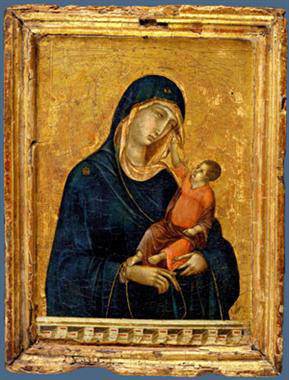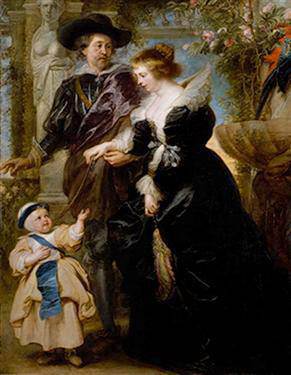All images courtesy of the Metropolitan Museum of Art, www.metmuseum.org

Duccio di Buoninsegna – Madonna and Child (ca. 1300)

Rubens – His Wife Helena Fourment (1614-1673), and Their Son Peter Paul (born 1637) (oil on canvas, probably late 1630s)

Ralph Earl – Elijah Boardman (American, oil on canvas, 1789)
Metropolitan Museum exhibits The Philippe de Montebello Years
To celebrate Philippe de Montebello’s 31 years as Director of The Metropolitan Museum of Art, the curators of the Museum announced plans today to organize an exhibition of approximately 300 of the more than 84,000 works of art acquired during his tenure
]]>
This unique project – The Philippe de Montebello Years: Curators Celebrate Three Decades of Acquisitions, which will be on view in The Tisch Galleries from October 24, 2008, through February 1, 2009 – will be a collaboration of the curators currently working in the Museum’s 17 curatorial departments. Special emphasis will be placed on works that were transformative to the Metropolitan Museum’s collections by building on existing strengths and expanding into new areas of collecting. Mr. de Montebello – the eighth and longest-serving Director of The Metropolitan Museum of Art – announced in January his plans to retire at the end of the year.
“We wanted to create an exhibition to celebrate Philippe de Montebello’s auspicious career by focusing on an area of spectacular achievement at the heart of the institution: acquisitions,” said Helen C. Evans, the exhibition’s coordinator, who is the Metropolitan Museum’s Mary and Michael Jaharis Curator of Byzantine Art. “The breadth and greatness of the works on display in The Philippe de Montebello Years will tell multiple stories – of his stellar leadership of the Museum’s more than 300 curators, conservators, scientists, librarians, and educators; of the excellence of the collections in representing 5,000 years of human artistic achievement around the world; and of the Museum’s vital evolution in terms of renovating, expanding, and reinstalling galleries, developing conservation and research facilities, and enhancing visitors’ understanding and experiencing of art.”
She continued: “Philippe de Montebello has declared that curatorial expertise is the Museum’s most valuable currency. The Philippe de Montebello Years above all represents the curators’ appreciation of his respect for the expertise of his staff and their recognition of his devoted and skillful stewardship over the past three decades in building the Metropolitan Museum’s collections.”
The works of art in the exhibition were selected by each of the curatorial department heads, working with the curatorial Director’s Council and the Museum’s Forum of Curators, Conservators, and Scientists – the group that proposed the idea for the exhibition. Pre-existing selections of significant works that had been published in the Metropolitan Museum’s Bulletin (which is devoted each fall to major acquisitions) were also incorporated. The contributions of conservators and scientists, as well as the Museum’s extensive publishing program, will be represented in the exhibition as well.
Some highlights of the exhibition include: a striding horned demon of arsenical copper (Mesopotamia or Iran, Proto-Elamite period, ca. 3000 B.C.); an Egyptian wooden statuette of a kneeling figure (wood, Late Period or Early Ptolemaic Period, 380-246 B.C.); a porphyry support for a water basin (Roman, second century A.D.); a standing Buddha in mottled red sandstone from India (Gupta period, fifth century); a leaf from a Spanish manuscript (Romanesque, ca. 1180); Duccio di Buoninsegna’s Madonna and Child (ca. 1300); the illustrated manuscript Allegory of worldly and otherworldly drunkenness (Islamic, Safavid period, ca. 1526-27); Rubens, His Wife Helena Fourment (1614-1673), and Their Son Peter Paul (born 1637) (oil on canvas, probably late 1630s) by Peter Paul Rubens; Giovanni Battista Foggini’s Grand Prince Ferdinando de’ Medici (marble, ca. 1683-85); the armor of Infante Luis, Prince of Asturias (French, 1712); Ralph Earl’s Elijah Boardman (American, oil on canvas, 1789); a salted paper print by Onésipe Aguado of a woman seen from the back (French, ca. 1862); a Kongo power figure (Nkisi N’Kondi) from the second half of the 19th century; Tahitian Faces (Frontal View and Profiles) (charcoal on laid paper, ca. 1899) by Paul Gauguin; a coat by Paul Poiret made in Paris in 1919; a guitar made by Hermann Hauser in Germany in 1937; and White Flag (1955) by Jasper Johns.
Follow us on:

